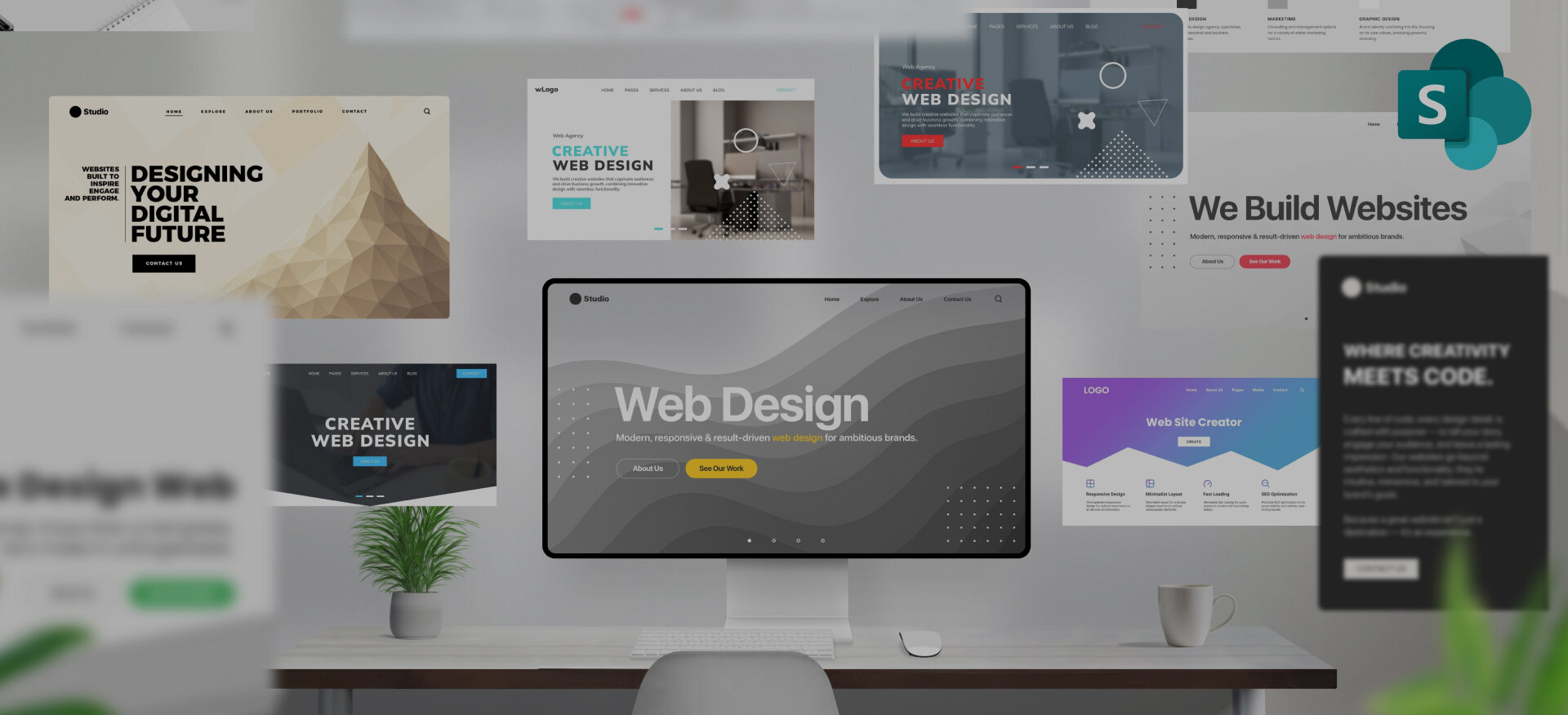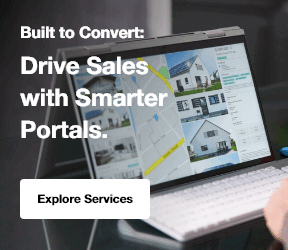In 2025, more than 85% of oil and gas buyers are expected to begin their journey online. That fact alone should give pause to any CEO or marketing manager leading a mid-market firm in this industry.
Why Your Website Is the Key to Growth in Oil and Gas becomes immediately clear when you consider this shift. What does it mean when nearly all of your potential customers start their decision-making process not with a phone call, but with a search bar?
From Texas to Alberta, the new reality is that your website is no longer just a reference point. It has become the first impression, the sales pitch, and the deal-closer - all rolled into one.
Your website is about functionality, credibility, and relevance. CEOs care about return on investment (ROI), efficiency, and competitiveness. Marketing managers want to build brand awareness, drive leads, and demonstrate clear impact. A modern website does both.
It connects strategy to execution. And more importantly, it meets the expectations of a digital-first buyer base who are evaluating your firm long before anyone on your team picks up the phone.
The Challenge: Meeting Buyer Expectations in a Digital-First Oil and Gas Market
We hear it in meetings and on the field: “Our customers know us.” That may have been true five or ten years ago. But today, a new generation of engineers, procurement leads, and project managers are rising through the ranks and they do their own research.
They expect immediate access to specs, lead times, pricing tiers, service areas, certifications, and evidence that your company can deliver. When that information isn’t readily available, they move on. It’s that simple.
This is especially true in key regions like Texas, Alberta, and North Dakota.
Mid-market firms there are aggressively upgrading their websites, investing in local SEO for small business, and adding content like project portfolios and technical papers. Why? Because that’s where the buyers are looking.
Without a site that reflects your capabilities, buyers may never even know you exist—or worse, assume you’re not qualified.
What Buyers Expect: Proof, Clarity, and Relevance
There’s a common misconception that oil and gas buyers operate purely on personal relationships or procurement protocols. That’s no longer the case. They’re looking for reliable digital indicators of trust before they engage.
So, what does that look like?
- They want to see certifications: API, ISO, HSE - anything that ensures compliance and credibility.
- They want to read real-world case studies and testimonials, especially from firms in similar size ranges or operating in the same basins.
- They expect clear descriptions of your services, whether that’s fabrication, inspection, pipeline cleaning, or compressor maintenance.
Your website should bring all of this to the surface within one or two clicks. A strong homepage or services page isn’t just branding; it’s proof of performance.
This is similar to how industries like programmatic SEO in fashion industry are using digital strategies to drive relevance and clarity, ensuring buyers find exactly what they’re looking for quickly and efficiently.
And when companies in the Permian Basin added project showcases to their websites, some reported seeing a 30% jump in high-intent inquiries. Not a new sales team. Not an ad campaign. Just clarity and proof.
A strong homepage or services page isn’t just branding; it’s proof of performance. Many healthcare organizations are also seeing the value of leveraging flexible platforms like Umbraco CMS for healthcare to deliver clear and concise content, tailored to meet the specific needs of their patients and professionals alike. The platform ensures seamless integration with healthcare-specific features while offering a user-friendly experience for site visitors, which is crucial for credibility and engagement.

Responsive Design: Serving Buyers Wherever They Are
In today’s oil and gas world, decision-makers aren’t sitting at a desk all day. They’re on the rig, on the move, or working from mobile command units. If your website isn’t built to work well on mobile, it’s costing you leads. That’s where responsive design becomes a business necessity - not just a design choice.
Over 60% of all B2B search activity now happens on mobile. If your site takes too long to load or isn’t easy to tap and scroll, buyers won’t stick around. They’ll leave and go to a competitor whose website is simpler and faster. By using e-commerce marketing services, businesses can ensure that their online presence is optimized for mobile users, providing a seamless experience.
A responsive design means your site adjusts to every screen sizefrom desktop to tablet to smartphone. It loads in under 2.5 seconds. It lets visitors tap a phone number or location map without frustration. Every button and piece of content resizes properly, no matter how someone is browsing.
Here’s why this matters: One oil and gas supplier in Oklahoma updated their mobile site and saw a 25% rise in quote requests from mobile users. These were field workers and engineers who submitted requests while on-site. The mobile site helped them act fast and that brought more business. Partnering with marketing and branding services ensures that your mobile site not only performs well but also aligns with your overall brand image, providing a seamless experience across all platforms. Additionally, local SEO marketing plays a vital role in improving your site’s visibility, ensuring it reaches the right customers when they search online.
Lead Times: Transparency That Builds Trust
In oil and gas, time is everything. If your product doesn’t arrive when expected, your customer’s whole operation could stall. That’s why showing lead times clearly on your site is not just helpful - it’s essential.
Buyers want to plan. If they can’t find out how long delivery will take, they may assume your company isn’t organized. But if your website says things like “Delivery in 5 - 7 days” or “Installations scheduled within 10 business days,” that shows confidence. It tells the customer they can count on you.
A Gulf Coast distributor did this and saw two benefits: fewer customer support calls about delivery times, and a 15% drop in customer churn. Why? Because customers now had a clear sense of timing and could plan around it.
Adding lead times to your website helps visitors feel informed. It builds trust. It shows that your company knows how to deliver—and that gives buyers one more reason to choose you.
Making Products and Services Easy to Find
Your website should be like a digital sales rep. If someone visits looking for a specific part, tool, or service, can they find it in seconds? If not, they may leave and never come back.
The best websites in the oil and gas space have searchable catalogs that are easy to browse. This means:
- Filters that let users narrow results by region, use case, or product type.
- PDF downloads with specs, MSDS, or certifications.
- A smart search bar that understands part numbers or common terms.
A Calgary-based services company redid their product section this way. They added filters for basin and industry use, included technical sheets, and made it easy to search. In just two quarters, they saw a 40% jump in quote requests and longer average visit times.
Making your products and services easy to find is a win for everyone. The buyer gets what they need fast. You get more qualified leads. And your team saves time answering basic questions. Additionally, partnering with affordable web design services can ensure that your product catalog and search functions are optimized for a seamless user experience, making it easier for potential clients to navigate and find what they need.
From Traffic to Revenue: Making Your Website Convert
Let’s address the elephant in the room: “Is this really going to make us money?”
It’s a fair question. CEOs want numbers. Marketing managers want qualified leads. A modern website can deliver both - if it’s built for conversion.
This means having:
- Clearly placed contact forms
- CTAs (calls-to-action) on every page
- Integration with a CRM (like HubSpot or Salesforce)
- Call tracking for measuring offline inquiries that originated online
A Louisiana mid-market industrial services firm made a modest investment—roughly $48,000 - in a responsive, SEO-optimized website with CRM and analytics integration. In six months, they had:
- A 2x increase in website traffic
- 1.5x more form submissions
- A 20% increase in closed deals compared to the previous year
And the kicker? The biggest contract came from a procurement officer who found them during an online search, browsed their services, saw relevant certifications, and requested a meeting via their contact form.
Partnering with an SEO services in USA provider ensured that their website’s visibility was optimized, leading to an increase in high-quality leads and contracts.

Budget and Bandwidth: How to Get Started (Even Without a Big Team)
We get it. You’re not ExxonMobil. Resources are limited. The marketing team might be one person - or none. But that doesn’t mean you’re stuck.
It’s absolutely possible to launch a high-impact website with modest investment, using best practices and experienced partners who understand the industry.
Centric helps the clients in building the websites that convert; our process is thorough and we go step by step:
- Discover: Here we understand everything about your business, the market landscape and competitor performance as well as their weak points.
- Define: Here we define on what you exactly want to achieve from your web presence. As well as the responsibility for content; Centric has access to some of the best writers in the industry.
- Design: We start the design process; all sites that we build are custom designs as the uplift you see in business far out weighs any cost savings you will get by using an off the shelf template – typically does not resonate with your brand and your target market.
- Develop: Here our team of programmers use the best IT and security best practices to build out the website.
- Deploy: We take your website live; unlike other agencies; we have a 61 point checklist that the website goes through before going live.
- Dissect: For the next three months; we closely monitor the behavior of traffic of your website; including sessions recording and come up with improvements. Think of it like a warranty on your new home.
In other words, it needs to be done strategically with an agency that has considerable Oil and Gas experience and understands the market. Company branding services are essential in ensuring that your website not only attracts visitors but also aligns with your brand identity and message.
We recently took Promethean Energy’s website live, and within the first week, we saw more visitors than their previous website had seen in the last six months. Call it luck? We see it as a calculated process.
Conclusion: From Invisible to Indispensable
In 2025, your buyers aren’t waiting for a cold call. They’re not leafing through printed brochures. They’re online - right now - looking for reliable vendors who can meet their timelines, prove their capabilities, and make it easy to engage.
The tariffs that went live on April 2nd, 2025, are set to create a dynamic shift in the supply chain. If you’re smart, this is your time to capture a bigger market share. But that opportunity starts with visibility. It starts with trust. And today, both begin with your website.
A responsive, trustworthy, information-rich website builds trust before you ever speak. It proves credibility without a pitch. It delivers leads while you sleep. And more importantly, it shows buyers that you’re ready for the pace, pressure, and professionalism they expect.
A well-built website is not just a digital placeholder - it’s the key to growth in oil and gas. It allows you to compete beyond local relationships and traditional sales. It works while your team is offline. Its ROI begins within the first 15 days of going live - starting with increased search impressions, then clicks, and then leads. Real prospects. Real revenue.
And for your existing customers? It sends a signal that your company is modern, capable, and evolving.
In an industry where every second and dollar counts, your website isn’t optional anymore. It’s the edge that turns prospects into long-term partners.








